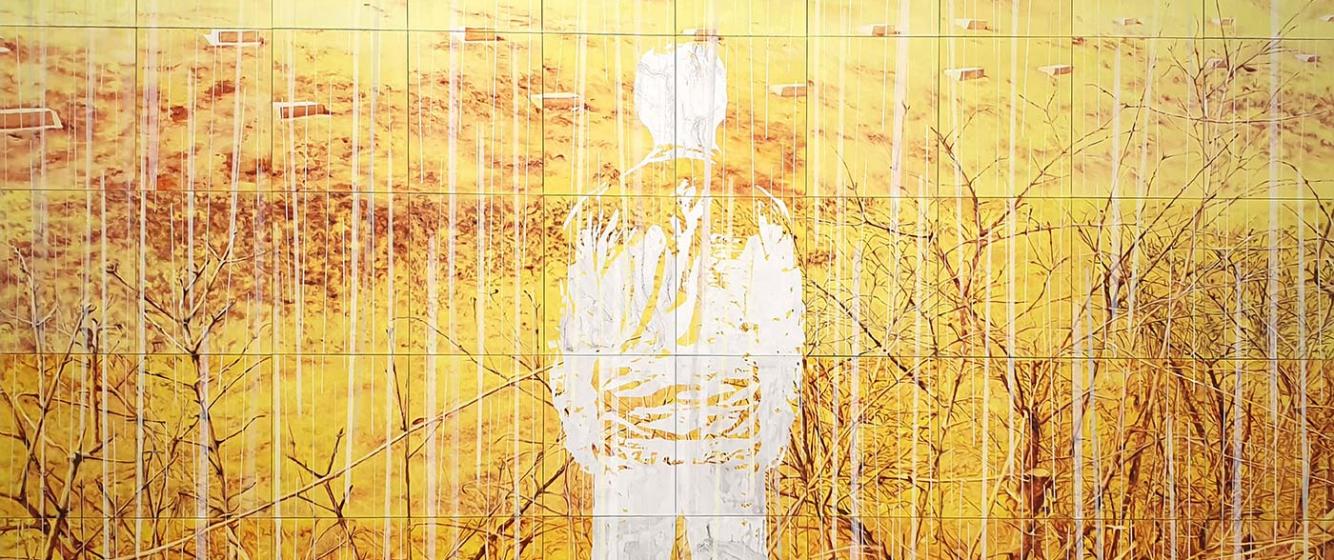
2021, Oil and acrylic on canvas, 303*500cm, Commissioned by Inter-Korean Transit Office
Border Picks - Introduction
Border Picks is ABRN’s multi-media forum that picks your stories from different borderlands across Asia – stories from the field, in the news, on your mind.
In a time of great hope and prolonged uncertainty, borders make their presence physically and emotionally felt. They demarcate new fronts for defence as well as materialise crucial lifelines that sustain livelihoods and aspirations.
Your words, photos, sounds, and artwork are most welcome in this ABRN community space. Join us and think with us on Asian borders – how they are made and remade, how they evolve, how they are perceived, how they present new challenges and opportunities to those living in the interstitial spaces we call borderland.
Border Picks invites creative pieces from borderland enthusiasts from diverse fields. Scholars, researchers, students, artists, activists, journalists, community members – if you have lived and worked in any part of the Asian borderlands, we want to hear from you.
Contact us at asianborderlands@iias.nl to share your interest to contribute to one of the following blog categories, Border Speaks; Border Pics or Borderflix.
Border Speaks
Short pieces of writing from the field and “i-witness” first-hand accounts on the ground. Each contribution could be anywhere between 200-500 words.
Slightly longer opinion pieces are welcome, which could be reflections and debates on pertinent issues confronting Asian borderlands. These could be also brief outlines of your recent publications. Opinion pieces could be 500-800 words.
Border Pics
Photographs and illustrations of Asian borderlands that show your unique perspectives and views. We welcome original visuals created by you or the community you are working with in the field. You may want to write a short story to accompany your artwork.
Borderflix
Present your creative takes on Asian borders using edited or retouched visual work to tell stories. Graphic novel, videos and v-logs, collage, animation, and other forms of artwork are welcome for Borderflix.
Editorial Board Border Picks
Alessandro Rippa, Rachel Carson Centre, LMU Munich, Germany
Busarin Lertchavalitsakul, Naresuan University, Thailand
Ed Pulford, University of Manchester, United Kingdom
Emilia Sulek, University of Fribourg, Switzerland
Galen Murton, James Madison University, United States
Henryk Alff, Eberswalde University for Sustainable Development, Germany
Juan Zhang, University of Bristol, United Kingdom
Myungho Hyun, Yonsei University, South Korea
Radhika Gupta, Leiden University, the Netherlands
Border Picks is an initiative of the Asian Borderlands Research Network and the International Institute for Asian Studies.
It is supported by an editorial team with members from the ABRN network. Early career scholars, postgraduate students, and independent researchers beyond academia are highly encouraged to join this forum and ABRN’s global community.
Header image
HONG SOUN <LOST>
Through the <LOST> painting, Hong draws attention to a cemetery of dead North Korean soldiers, also known as the "Enemy Cemetery", located near the Demilitarized Zone (DMZ) in Paju, just within sight of North Korea. The cemetery contains the graves of North Korean and Chinese soldiers who came to the South during the Korean War, and armed communist spies who arrived after the armistice. Among ther, the artist focuses on the armed communist spies. The United Nations suggested returning soldiers' bodies, and most of them were returned to their hometowns in China and North Korea. However, the North refused to receive the bodies of these so-called armed spies, claiming they were self-staged by South Korea. Furthermore, accepting the bodies would have meant a violation of the armistice agreement. As such, the very existence of those whose lives were lost because of ideology is being denied even after their death. Through the <LOST> painting, Hong reveals the remaining wounds of those who still reside on the border, unable to belong either here or there. Seven decades and many generations have passed since the armistice, so war memories are fading. Nonetheless, wounds caused by the war continue to surround us. The fictional Character (armed communist spy) who appears in work is neither here nor in the afterlife; instead, he is simply behind the yellow throny bushes and tombstones, looking into the distance. Is he looking at his hometown, or is he gazing into the void?
2021, Oil and acrylic on canvas, 303*500cm, Commissioned by Inter-Korean Transit Office
Hong Soun, smhmjk@hanmail.net
Add new comment